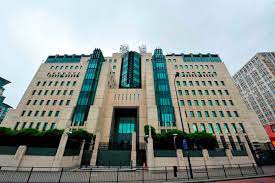Courtesy : www.thespruce.com
Green postmodern architecture
Postmodern architecture is a 20th century movement that is characterized by an often irreverent and eclectic mishmash of classic and modern styles to create singular works of architecture that aspire to look like nothing that has come before. Some of the world’s most controversial, provocative, idiosyncratic, and memorable buildings have come out of the postmodern architectural movement.
:max_bytes(150000):strip_icc():format(webp)/Portland_Building_1982-b0e801d520984e2297b0a0a40d745e94.jpg)
History of Postmodern Architecture
Postmodernism arose in the 1960s and ’70s as an architect-driven critical reaction and response to the prevailing Modern architecture of the mid-20th century, which postmodern architects perceived as placeless and rigid, built from sleek modern materials like steel and glass and lacking in ornament and emotion. Postmodern architects believed that the utopian ideals of Modernism as a democratic form of accessible architecture for the masses had failed and that its cultural moment had passed (an assertion which, judging by the enduring 21st century popularity of modernist aesthetics, has not weathered the test of time). Whereas Modernism was devoted to order and simplicity, postmodernism embraced complexity and contradiction, as argued in an influential 1966 book by American postmodern architect Robert Venturi titled: Complexity and Contradiction in Architecture.
The most successful postmodern buildings exude personality, wit, and an ironic take on past architectural elements and movements, eschewing conventional beauty and notions of what constitutes good taste. Using a pastiche of disparate styles, postmodern buildings can be challenging for the uninitiated, veering toward kitsch and camp.
Postmodernism flourished during the economic boom of the 1980s and continued into the 1990s, leaving any number of loud, proud, genre-defying architectural monuments in its wake, first in the United States, and then around the world in places like Europe, Japan, and Australia where its influence spread. Postmodernism influences contemporary architecture to the present day.
:max_bytes(150000):strip_icc():format(webp)/GettyImages-1223347587-fc63935eee8d4d8b9e2c1ee1db300fd2.jpg)
Key Characteristics of Postmodern Architecture
- Mishmash of architectural styles and periods
- Sculptural forms
- Frequent embrace of bright color, sometimes in the form of ceramic tiles or colored glass
- Liberal use of classical ornamental details taken from past architectural movements, often mixed and matched in unconventional ways
- Use of abstraction
- Characterized by playfulness, whimsy, humor, irony
- Use of trompe l’oeil
- Idiosyncratic rule-breaking forms that defied the dogmatic codes of Modernism
:max_bytes(150000):strip_icc():format(webp)/lossy-page1-1843px-Vanna_Venturi_House_in_Chestnut_Hill_Philadelphia_Pennsylvania_LCCN2011631329-8d9dbf2f41da49acbe5cb218b217ff9e.jpg)
Notable Examples of Postmodern Architecture
The Portland Building, designed by the late architect Michael Graves, is a municipal office building in Portland, Oregon, that made waves for its unconventional use of color, surface materials, and decorative flourishes when it opened in 1982, challenging the definition of what an office building was supposed to look like. It was placed on the National Register of Historic Places in 2011.
The Vanna Venturi House in Chestnut Hill, Philadelphia, was completed in 1964 by architect Robert Venturi. Built for Venturi’s mother, with its unconventional scale and broken gable roof, it was one of the first acknowledged works of postmodern architecture. “I like elements which are hybrid rather than pure, compromising rather than clear, distorted rather than straightforward,” the architect wrote.
The Neue Staatsgalerie in Stuttgart, Germany, opened in 1984 after five years of construction. It was designed by James Stirling, Michael Wilford and Associates and houses a collection of 20th- and 21st-century modern art.
:max_bytes(150000):strip_icc():format(webp)/1620px-Stuttgart_-_Neue_Staatsgalerie_35736920402-324da574ead24ac99d1bdc31c1285f39.jpg)
The headquarters of the Secret Intelligence Service (SIS) building or M16 Building in London, completed in 1994, was designed by Terry Farrell and Partners. Its quirky design was inspired by everything from 1930s British industrial power stations to Mayan and Aztec temples. The building is practically a character in James Bond films such as GoldenEye (1995), The World Is Not Enough (1999), Skyfall (2012), and Spectre (2015).
The Centre Pompidou, erected to much fanfare and controversy in Paris in the 1970s, is now one of the city’s main attractions. This contemporary art museum designed by architects Renzo Piano and Richard Rogers is a postmodern building whose functional elements, including pipework and elevators, are visibly relocated to the outside to leave as much room as possible on the inside for art and people. The colorful anomaly nestled in the heart of stately 19th-century Haussmannian Paris makes it all the more remarkable, even today.
Architect Frank Gehry is considered a postmodern master thanks to signature buildings such as the Walt Disney Concert Hall in Los Angeles, completed in 2003, which looks like it’s made from the larger-than-life stainless steel wings of a fantastical ship.



